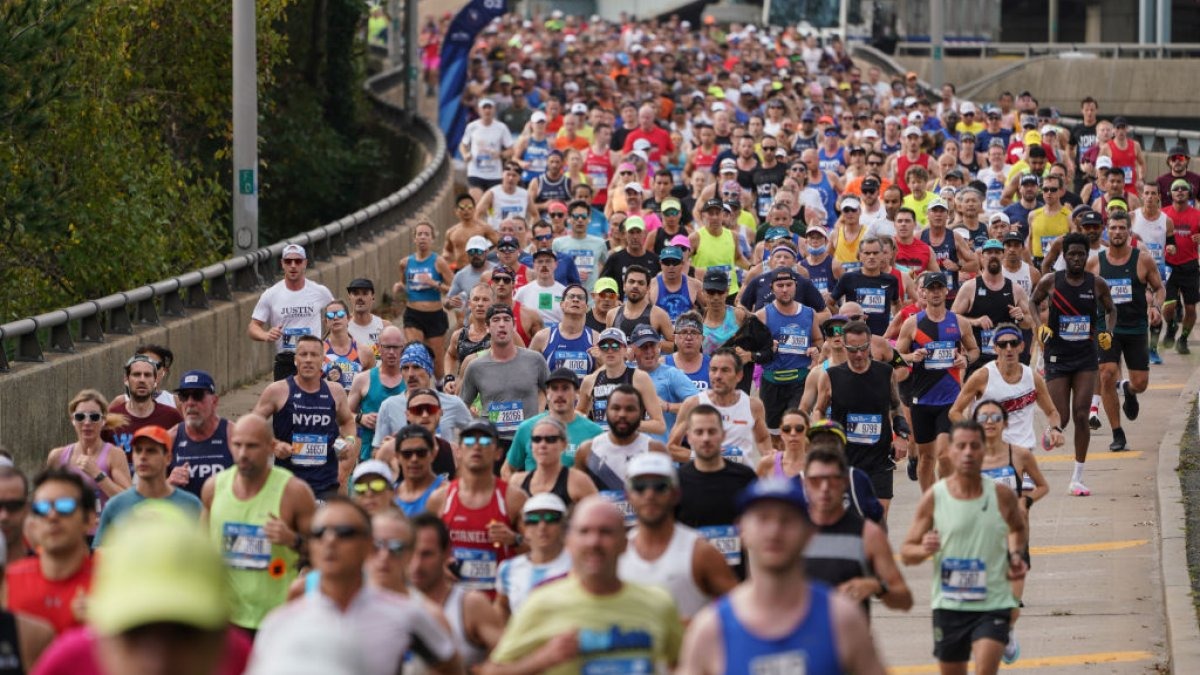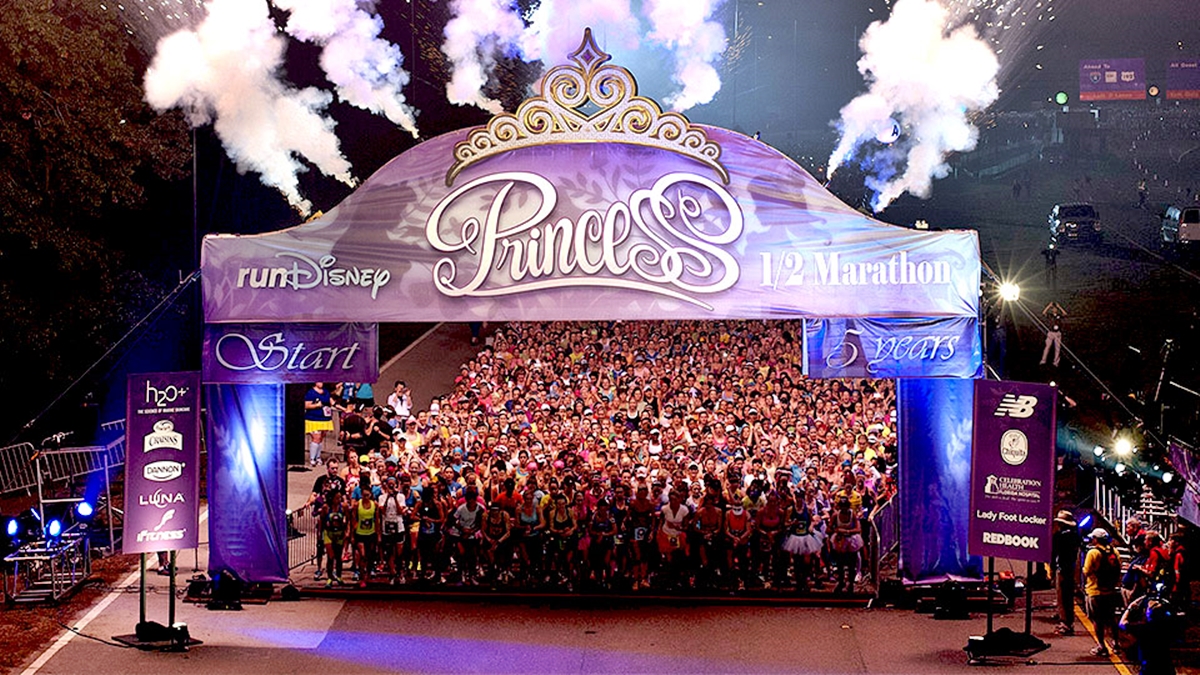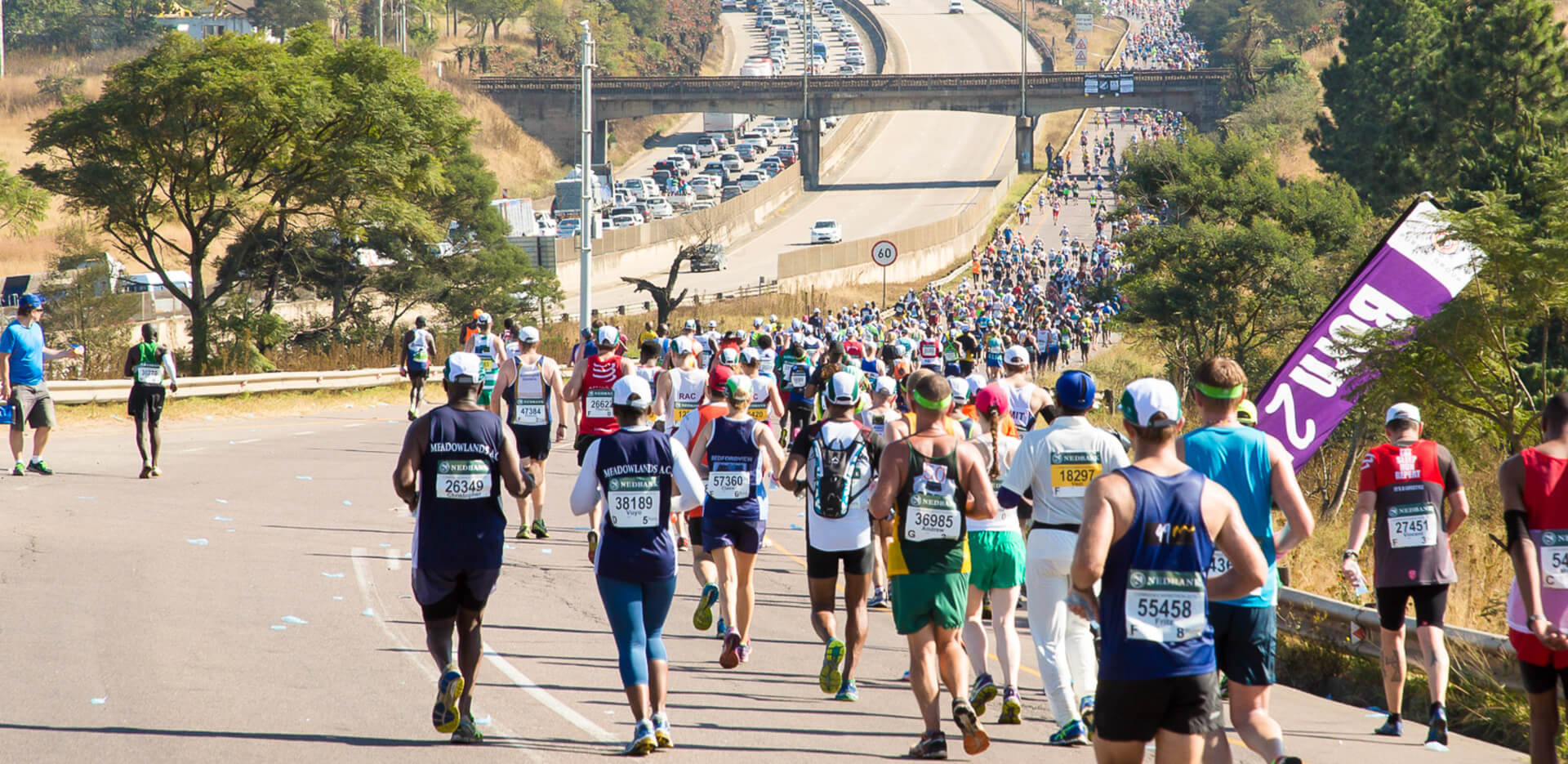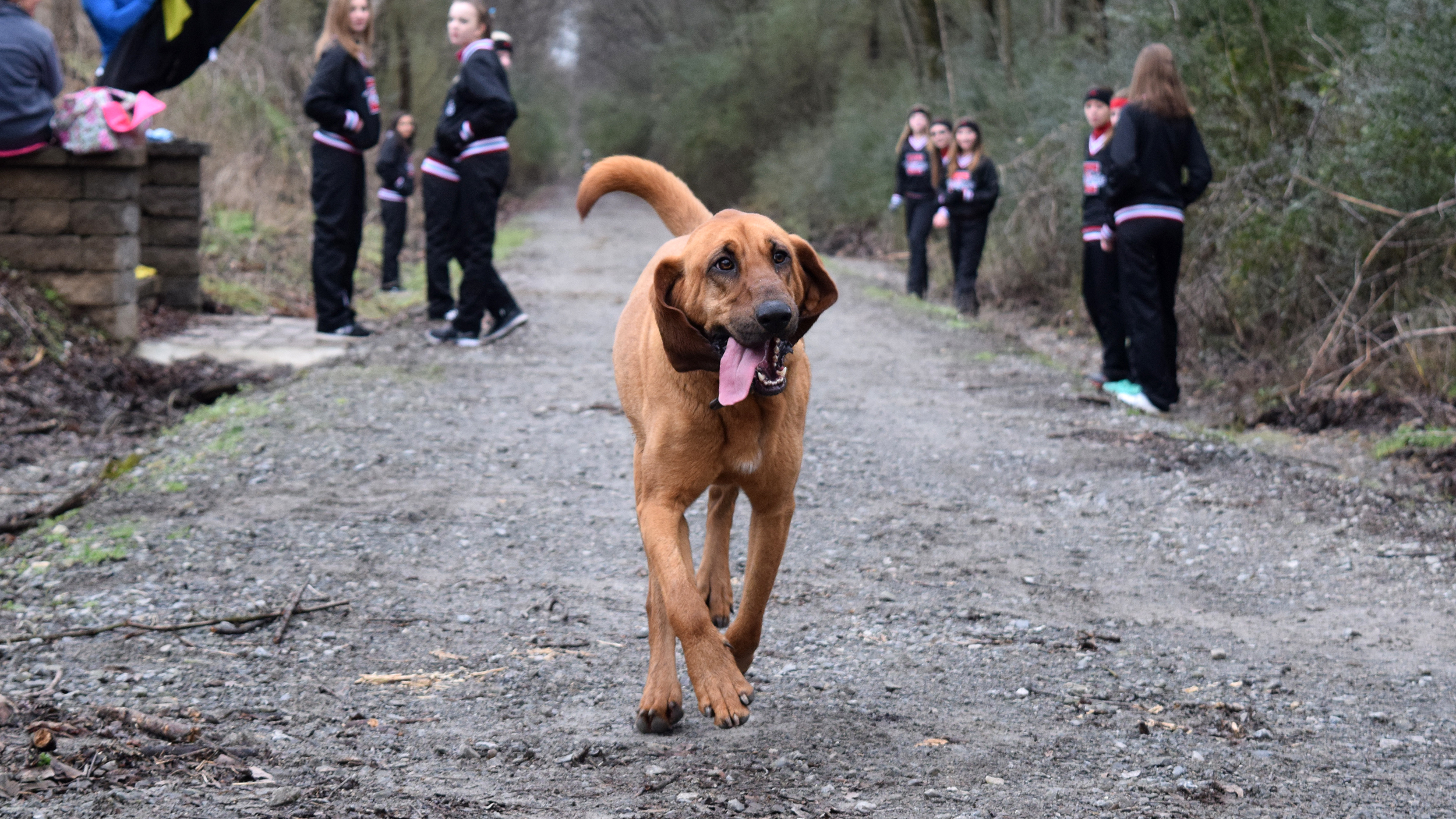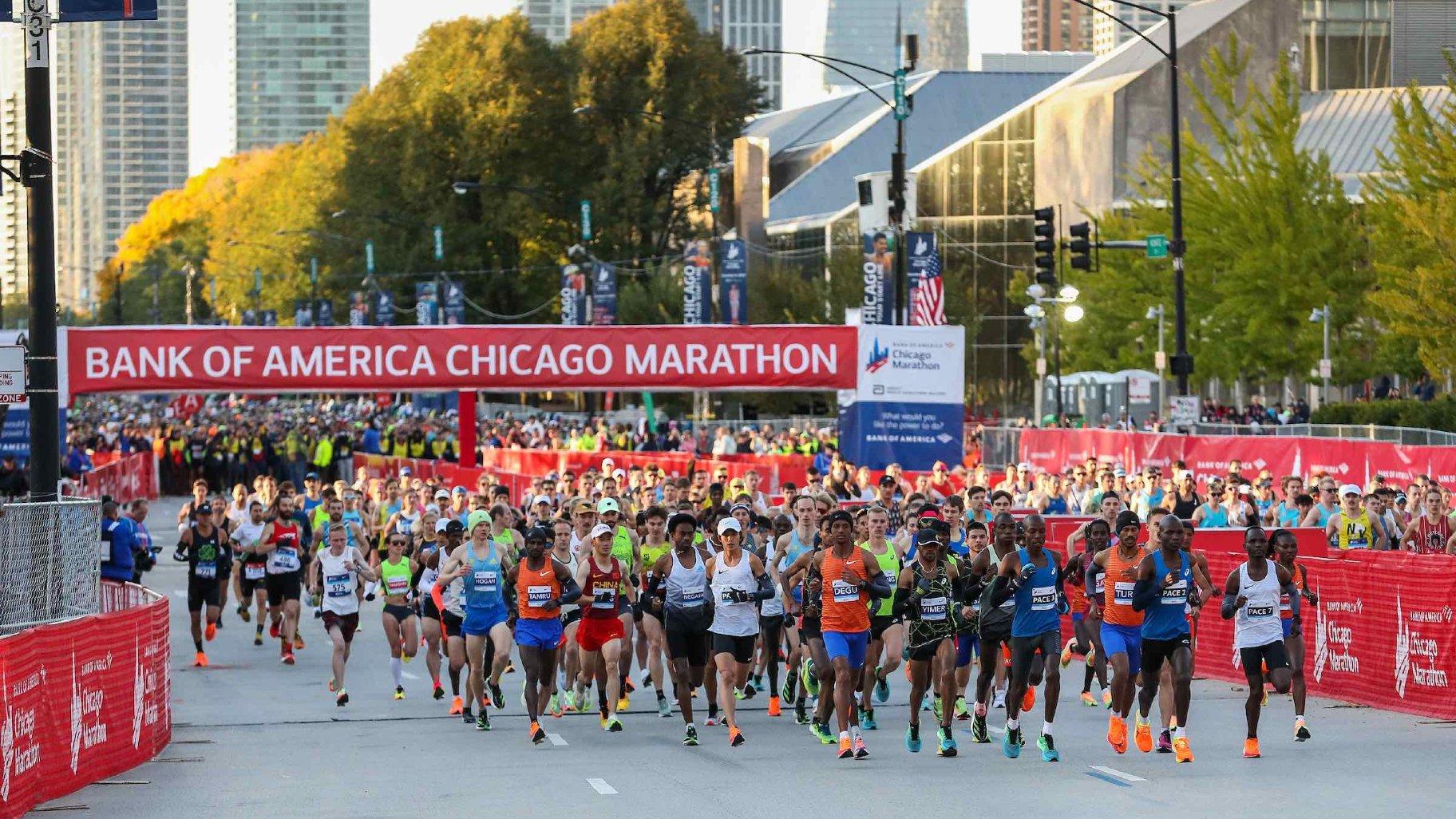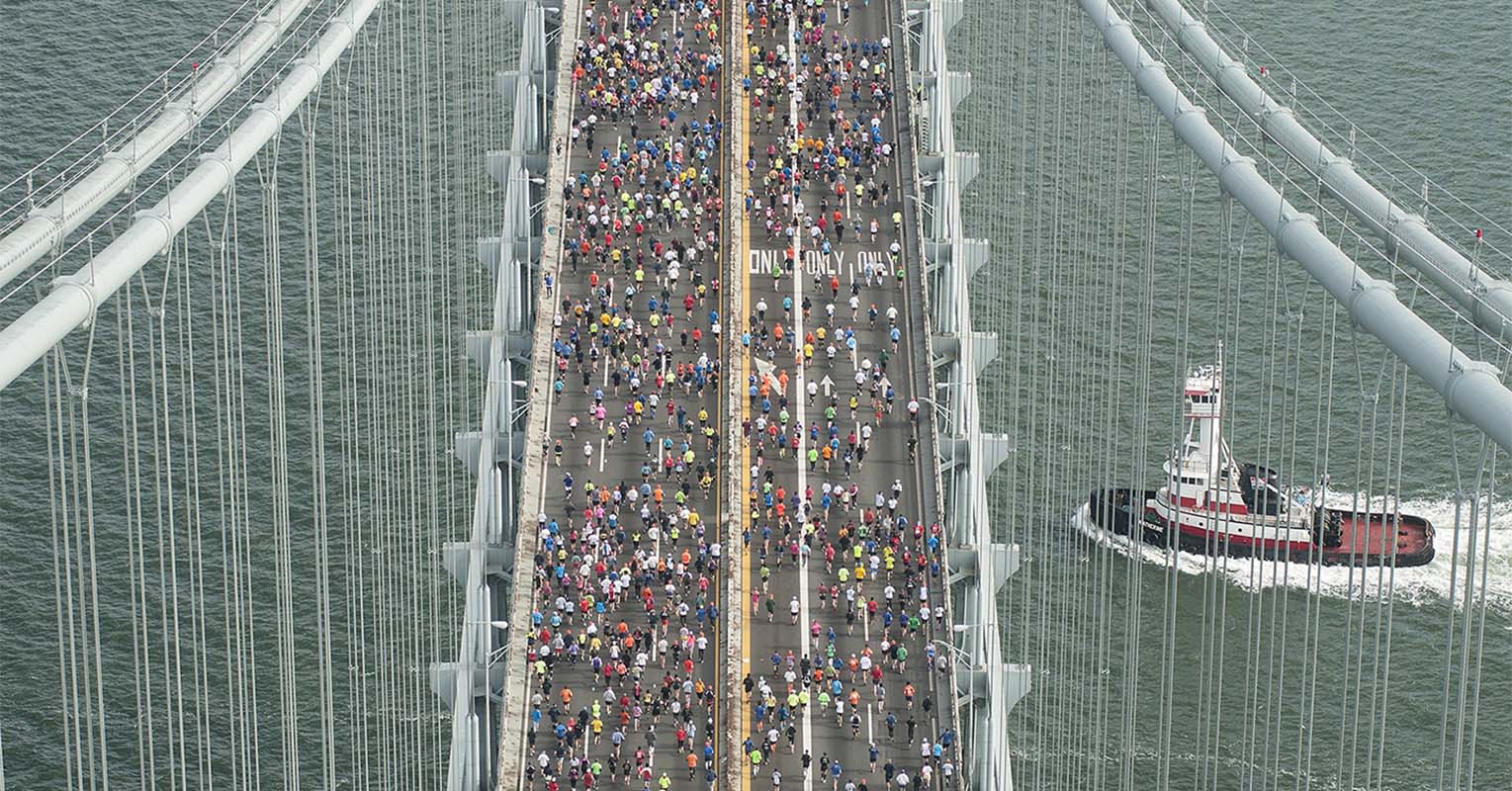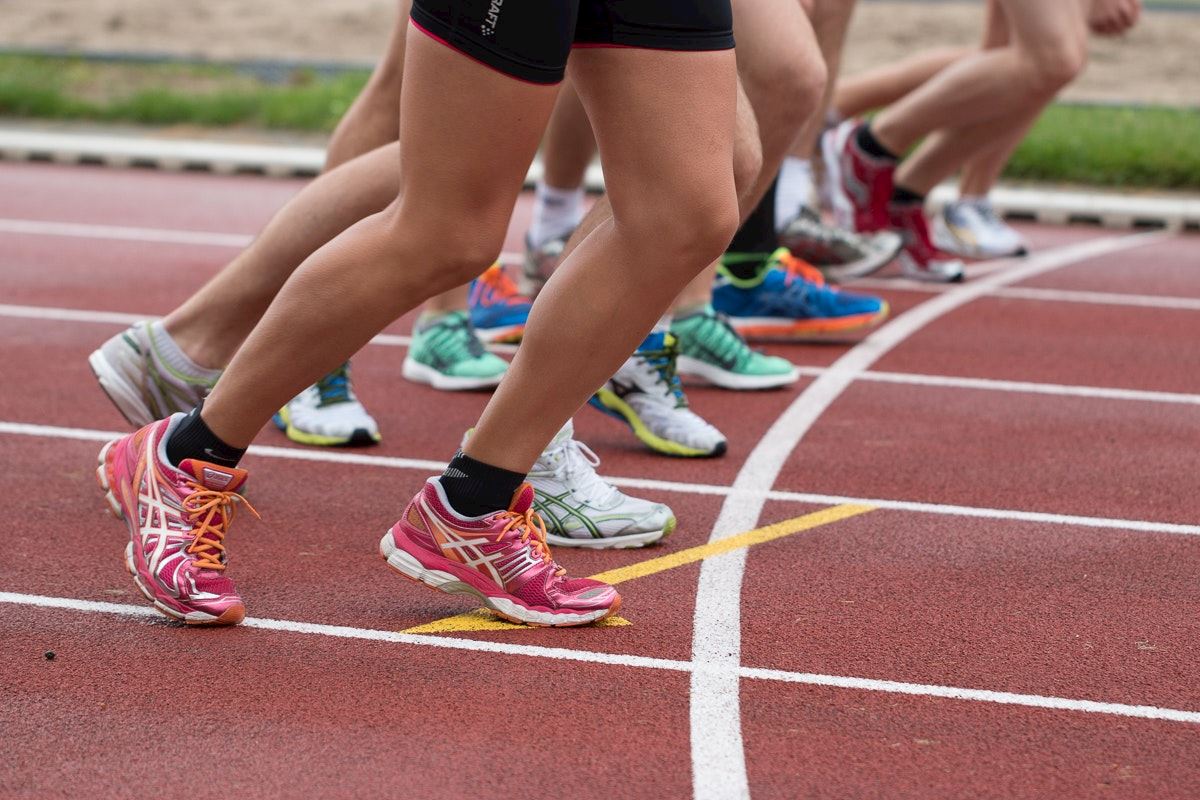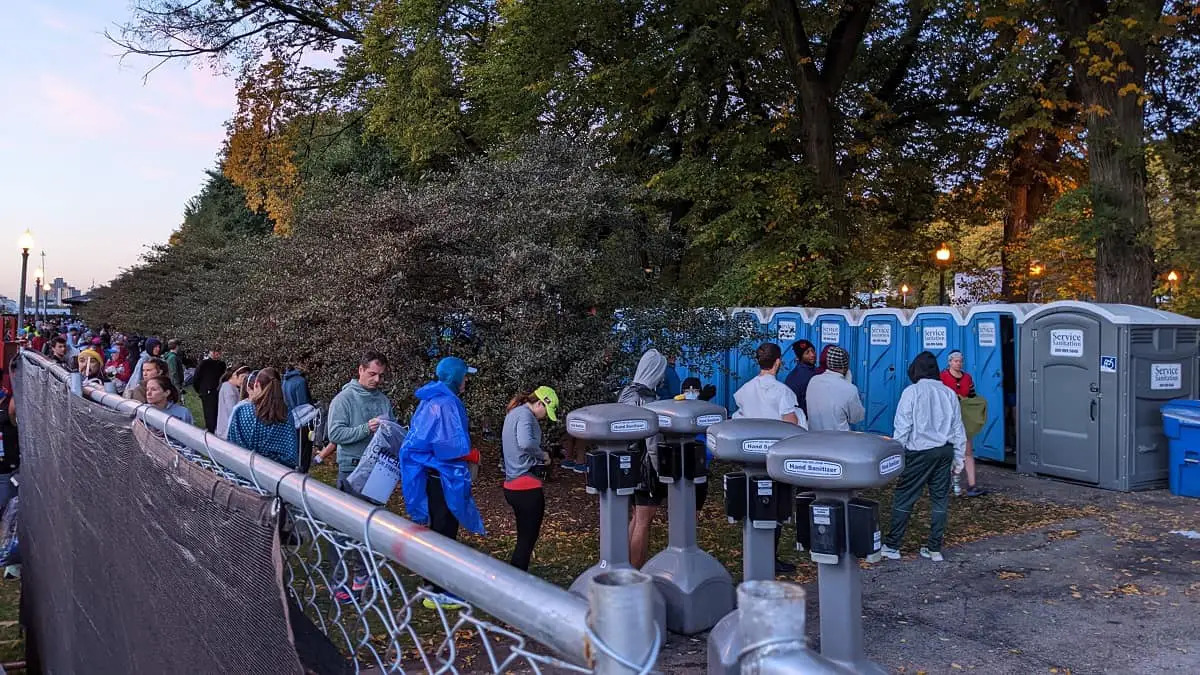

Featured
How Do Marathon Runners Pee
Modified: January 22, 2024
Discover how marathon runners handle bathroom breaks during races in this featured article. Find out the strategies and tips they use to pee on the go.
Introduction
Marathon running is a sport that pushes the limits of human endurance, requiring physical strength, mental fortitude, and meticulous training. While the focus is often on training regimes, nutrition, and race strategies, there is one aspect of a marathon runner’s experience that is rarely discussed: the need to urinate during a race.
When you think about it, it’s not surprising that marathon runners may need to pee during a race. After all, they are engaged in a high-intensity physical activity for several hours, consuming fluids to stay hydrated. However, the logistics of answering nature’s call while trying to beat personal records can be quite challenging.
In this article, we will delve into the fascinating physiology of marathon running, explore the reasons why marathon runners may need to urinate during a race, discuss strategies that runners employ to manage this issue, and address the unique challenges faced by female marathon runners. Additionally, we will touch upon the important relationship between hydration and urination during a marathon, as well as the potential risks and concerns associated with this topic.
So, if you’ve ever wondered how marathon runners handle nature’s call during a race, or if you are a runner looking for strategies to overcome this challenge, this article will provide you with interesting insights and valuable information.
The Physiology of Marathon Running
Understanding the physiological demands of marathon running is crucial in comprehending why runners may need to urinate during a race. When marathon runners engage in prolonged physical activity, their bodies undergo various changes to meet the demands of the exercise.
One of the key adaptations that occur during marathon running is increased blood flow to the skeletal muscles. As the legs work tirelessly to propel the runner forward, blood vessels dilate, allowing more oxygen and nutrients to reach the muscles, ensuring optimal performance. This increased blood flow can also stimulate the kidneys to produce more urine, leading to a need to urinate.
Furthermore, marathon running triggers the release of hormones such as adrenaline and cortisol. These hormones help regulate blood pressure, increase heart rate, and mobilize energy stores. They can also impact kidney function, increasing urine production. Additionally, the physical jostling and impact on the bladder during running can contribute to the need to urinate.
Another factor to consider is the impact of dehydration on urine production. During a marathon, runners can lose substantial amounts of fluid through sweat. This loss of fluids can lead to dehydration, resulting in concentrated urine and an increased urge to urinate.
The combination of increased blood flow to muscles, hormonal changes, bladder impact, and potential dehydration all contribute to marathon runners’ unique physiological needs, including the need to urinate during a race.
By understanding how the body responds to the demands of marathon running, we can begin to explore strategies that runners employ to manage their bladder needs effectively. Whether it’s finding suitable opportunities to pee, practicing specific techniques, or managing hydration levels, marathon runners have developed various strategies to address this aspect of their sport.
The Need to Urinate during a Marathon
It’s no secret that marathon runners often have the need to urinate during a race. The combination of intense physical exertion, high fluid intake, and the body’s natural response to prolonged exercise can lead to the urge to relieve oneself. Let’s take a closer look at why runners may experience this need.
First and foremost, hydration plays a critical role. To sustain performance and prevent dehydration, runners consume fluids throughout the race. This can range from water to sports drinks, depending on the individual’s preference and the race conditions. While hydration is vital, it also stimulates urine production, leading to the need to urinate.
Additionally, the physical impact of running can put pressure on the bladder. As the body moves and jostles, the bladder can become compressed, triggering the urge to urinate. The constant pounding on the pavement combined with the repetitive motion of running can exacerbate this sensation.
Furthermore, the release of hormones, such as adrenaline, during a marathon can also contribute to the need to urinate. These hormones, which are essential for maintaining energy levels and focus, can stimulate urine production, even in the absence of significant fluid intake.
It’s worth noting that every individual’s experience is different. Some runners may feel a strong urge to urinate early in the race, while others may only feel the need later on. Factors such as bladder capacity, hydration practices, and overall fitness level can influence the timing and intensity of the need to urinate.
Understanding the need to urinate during a marathon is crucial for runners hoping to optimize their performance and comfort during the race. By acknowledging this aspect and implementing appropriate strategies, runners can effectively manage their bladder needs and relieve themselves without compromising their overall race performance.
Strategies for Marathon Runners to Pee
Managing the need to urinate during a marathon can be challenging, but experienced runners have developed strategies to address this issue effectively. Here are some common strategies employed by marathon runners to relieve themselves without sacrificing valuable race time:
- Utilize designated porta-potties: Most marathons provide designated restroom stops along the race route. These porta-potties are strategically placed to accommodate the runners’ needs. Many runners plan their bathroom breaks in advance, aiming for these designated areas to avoid losing precious time looking for a suitable spot.
- Time your fluid intake: By strategically timing fluid intake, runners can minimize the need to urinate during the race. Some runners choose to limit fluid intake in the hour leading up to the race to ensure they start with an empty bladder. Others may adjust their drinking patterns, taking in less fluid in the early stages of the race when the need to urinate may be less critical.
- Practice the “pee walk”: This technique involves walking while releasing urine discreetly. Runners can slow down their pace, find a less crowded area, and discreetly empty their bladder while continuing to move forward. It requires practice to perfect this technique, but it can be a useful strategy for those who don’t want to lose momentum during the race.
- Wear absorbent clothing: Some runners opt for wearing specially designed absorbent clothing, such as pee-proof shorts or underwear. These garments provide a convenient solution for urinating on the go, as they absorb and retain the urine, preventing discomfort and minimizing the risk of chafing. It’s essential to ensure proper fit and comfort when choosing this option.
- Embrace nature: In more secluded parts of the race route, some runners may choose to find a discreet spot in nature to relieve themselves. While this strategy is not endorsed by race organizers, some runners find it necessary when other options are limited. It’s important to be respectful of the environment and follow any guidelines set by race officials.
It’s crucial for runners to remember that every individual’s needs and strategies may vary. What works for one person may not work for another. It’s recommended that runners practice and experiment with different strategies during training runs to determine what works best for them. By finding a strategy that allows them to relieve themselves comfortably and efficiently, runners can focus on their performance without unnecessary distractions during the race.
Female Marathon Runners’ Challenges
Female marathon runners face unique challenges when it comes to managing the need to urinate during a race. These challenges are primarily related to anatomical differences, hygiene concerns, and the availability of appropriate facilities. Here are some of the key challenges that female runners may encounter:
Anatomical challenges: Women have additional physiological considerations due to their anatomy. For instance, the proximity of the urethra to the vagina makes it more challenging to aim and control the direction of urine flow. This can lead to messier and more time-consuming bathroom breaks and may require additional cleaning and hygiene precautions.
Hygiene concerns: Female runners need to be particularly cautious about maintaining proper hygiene during a race. Running in wet or soiled clothing can increase the risk of discomfort, chafing, and even urinary tract infections. Female runners often have to navigate these challenges while balancing the need to relieve themselves quickly without compromising hygiene standards.
Limited restroom facilities: While race organizers strive to provide adequate restroom facilities, the demand for them can still exceed the available supply, especially during larger marathons. This can result in longer wait times, especially for women who may require privacy for personal hygiene needs. Female runners often have to factor in these potential delays when planning their bathroom breaks during a race.
Menstrual considerations: For female runners who experience their menstrual cycle during a marathon, additional considerations come into play. Managing menstrual hygiene products, such as tampons or pads, can add an extra layer of complexity. It is essential for female runners to plan ahead and ensure they have access to appropriate restroom facilities for changing or disposing of menstrual products.
Supportive sportswear: Choosing the right sportswear can also impact the comfort and convenience for female runners. Opting for running gear with built-in moisture-wicking properties, supportive underwear, or specialized menstrual hygiene options can help address some of the challenges associated with urination during a race.
It’s important to recognize and address these challenges to ensure that female runners can navigate their needs comfortably and efficiently during a marathon. By considering the unique requirements of female runners, race organizers can make efforts to provide adequate facilities and support for all participants, allowing them to focus on their race performance without unnecessary obstacles.
Hydration and Urination during a Marathon
Hydration plays a crucial role in a runner’s performance and overall well-being during a marathon. Proper fluid intake helps maintain optimal body function, enhances endurance, and prevents dehydration. However, the relationship between hydration and urination is intertwined, as increased fluid intake can also lead to the need to urinate. Let’s explore this connection further.
The American College of Sports Medicine recommends that marathon runners drink fluids to replace sweat losses and prevent fluid imbalance. The general guideline is to consume about 5-12 ounces of fluid every 15-20 minutes during the race. This helps avoid dehydration and ensures that the body has enough fluid for efficient cooling and muscle function.
As runners consume fluids, their bodies absorb water and distribute it to various tissues, including the blood vessels, muscles, and organs. The excess fluid that the body doesn’t immediately need is filtered by the kidneys, producing urine. The volume and frequency of urination during a marathon depend on several factors, including individual physiology, sweat rate, environmental conditions, and fluid intake.
It’s important to note that runners’ sweat rates can vary greatly. Some individuals are heavy sweaters, losing a significant amount of fluids through sweat, while others may sweat less. Additionally, environmental factors, such as temperature and humidity, can influence sweat rates and ultimately impact the need to urinate.
During a marathon, runners often face a dilemma: maintaining proper hydration while managing the need to urinate. Timing fluid intake and carefully monitoring hydration levels can help strike a balance. Some runners choose to drink smaller amounts more frequently to minimize the need to urinate, while others prefer larger but less frequent sips of fluids.
It’s also worth mentioning that thirst is not always an accurate indicator of hydration status. By the time a runner feels thirsty, they may already be slightly dehydrated. Therefore, it’s essential to drink fluids consistently throughout the race, even if thirst hasn’t manifested.
Being mindful of hydration and urine production during a marathon is crucial for runners’ overall performance and well-being. By understanding the body’s fluid balance and individual hydration needs, runners can tailor their fluid intake to optimize performance and minimize the need to urinate excessively.
Potential Risks and Concerns
While managing the need to urinate during a marathon is a common challenge for runners, there are also potential risks and concerns associated with this aspect of the sport. It’s important for runners to be aware of these risks and take necessary precautions to mitigate them. Here are some potential risks and concerns to consider:
Dehydration: The fear of needing to urinate during a marathon should not overshadow the importance of proper hydration. Dehydration can have severe consequences on performance, leading to decreased endurance, muscle cramps, dizziness, and even heatstroke. It’s essential for runners to balance fluid intake and urination needs, especially in warm and humid conditions.
Bladder discomfort: Holding in urine for an extended period can lead to bladder discomfort and potentially urinary tract infections. Ignoring the urge to urinate for prolonged periods can cause bladder distension and irritation. It’s crucial for runners to listen to their bodies and prioritize their health by finding appropriate opportunities to relieve themselves during the race.
Hygiene: Maintaining proper hygiene during a marathon is essential to prevent discomfort, chafing, and skin irritation. Runners should be mindful of keeping their clothing and themselves as clean and dry as possible. Carrying personal hygiene items, such as wet wipes or hand sanitizer, can help alleviate hygiene concerns during bathroom breaks.
Loss of race time: Taking bathroom breaks during a marathon can result in a loss of valuable race time. Standing in line for porta-potties or finding a suitable spot in nature can eat into a runner’s overall race time and potentially impact their performance. Planning ahead and considering alternative strategies, such as the “pee walk” technique, can help minimize time lost during bathroom breaks.
Stress and anxiety: The need to urinate during a race can create stress and anxiety for some runners. The fear of not finding a restroom in time or having to deal with unexpected bladder urges can distract runners and impact their mental focus. It’s crucial for runners to address these concerns through preparedness, practice, and maintaining a positive mindset.
By acknowledging these potential risks and concerns, runners can take proactive measures to mitigate them. Recognizing the importance of hydration, prioritizing bladder comfort, maintaining hygiene, and managing race time effectively are all crucial elements in ensuring a successful and comfortable marathon experience.
Conclusion
Managing the need to urinate during a marathon is a reality that many runners face. Understanding the physiological demands of marathon running, the impact of hydration on urine production, and the strategies employed by runners can help navigate this aspect effectively.
Hydration plays a vital role in a runner’s performance, but it also leads to the need to urinate. Timing fluid intake and understanding individual sweat rates can help strike a balance between hydration and bladder comfort. Strategies such as utilizing designated porta-potties, practicing the “pee walk,” wearing absorbent clothing, and embracing nature can help address the need to urinate during a race.
Female runners face additional challenges due to anatomical differences, hygiene concerns, and the availability of facilities. It’s important to recognize and support the specific needs of female runners to ensure they can manage their bladder needs comfortably during a marathon.
While there are potential risks and concerns associated with this aspect of marathon running, such as dehydration, bladder discomfort, hygiene issues, and time loss, runners can take precautions to mitigate these risks. Balancing hydration, prioritizing bladder comfort, maintaining proper hygiene, and managing race time effectively are key factors in a successful and enjoyable marathon experience.
Ultimately, acknowledging and addressing the need to urinate during a marathon is crucial for runners aiming for peak performance, comfort, and overall well-being. By understanding the physiology, employing effective strategies, and taking necessary precautions, runners can focus on their race while ensuring their bladder needs are met along the way.

